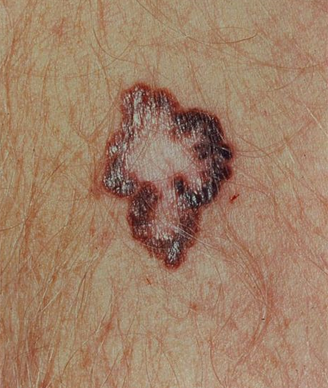Living Alone Increased Men’s Risk for Late-Stage Melanoma
Living alone increased a man’s risk for being diagnosed with later stage melanoma by more than 40%, according to the results of a recent Swedish study.
Living alone increased a man’s risk for being diagnosed with late-stage melanoma

Living alone increased a man’s risk for being diagnosed with later stage melanoma by more than 40%, according to the results of a Swedish study published recently in the Journal of Clinical Oncology. The study also showed an increased risk for women living alone, but it was not as high as that of men.
“The incidence [of melanoma] is increasing and, in Sweden, so is the mortality, despite ongoing prevention activities,” said study author Hanna Eriksson, MD, PhD, of the department of oncology-pathology at Karolinska University Hospital Solna. “Early low-risk tumors are curable and, therefore, it is essential to find groups of patients with worse prognosis to optimize the prevention strategies.”
Eriksson and colleagues conducted a population-based study to determine if any association existed between a person’s living status, their stage at diagnosis and disease-specific survival of cutaneous malignant melanoma. The study included 27,235 patients taken from the Swedish Melanoma Registry between 1990 and 2007.
The proportion of men living alone or with a partner was relatively stable across different age groups. However, although about 65% of women aged younger than 55 years were living with a partner, this was true of only 34% of women aged 70 years or older.
The researchers adjusted the data for age at diagnosis, level of education, living area, period of diagnosis, and tumor site. Results indicated that men living alone had a 42% increased risk of being diagnosed with stage II disease compared with stage I disease, when compared with men living with a partner (95% CI, 1.129-1.57). Men living alone also had a 43% increased risk of being diagnosed with stage III/IV disease compared with stage I disease (95% CI, 1.14-1.79).
In contrast, women living alone had only a 15% increased risk for being diagnosed with stage II disease compared with stage I disease, when compared with women living with a partner (95% CI, 1.04-1.28).
“We found that men living alone have a decreased survival in cutaneous malignant melanoma as compared to men living with a partner even after full adjustments including age, level of education and histopathologic prognostic factors,” Eriksson said. “This was in part explained by more advanced stages of disease at diagnosis for men living alone.”
The cutaneous malignant melanoma specific survival for men living alone was significantly decreased compared with men living with a partner (HR = 1.48; 95% CI, 1.33-1.65). Further adjustments accounting for all potential and established prognostic factors showed that cutaneous malignant melanoma specific survival was still decreased by about a third among men living alone.
Although the data showed that older women living alone were diagnosed with more advanced tumors, it did not affect the survival on the group level among women.
“As the incidence of cutaneous malignant melanoma is increasing, it is important to find groups of patients with a worse outcome and target them with prevention and early detection,” Eriksson said. “It is also a challenge to find ways to target these groups of patients with prevention activities.”